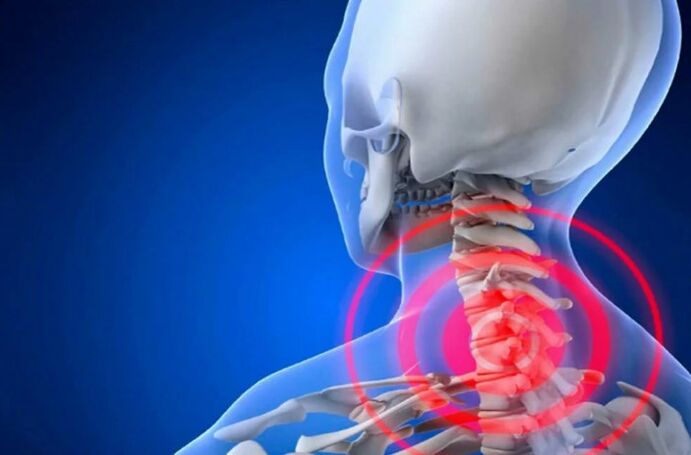Osteochondrosis in the cervical vertebra occurs due to pathological changes in the intervertebral disc. They weaken, become thinner, lose elasticity, stop to protect the vertebrae from damage, and lose the ability to provide them with sufficient mobility. The main danger of cervical osteochondrosis is that the disease affects the nerve ends of the spinal area and thus invades the blood supply to the brain.

Types and Classifications
Several stages of cervical vertebrae osteochondral bone are distinguished:
- First: Initial changes in intervertebral disc cartilage fabric;
- Second: The beginning of disk thinning, and the distance between vertebrae decreases;
- Third: the destruction of the disk and the beginning of spinal deformation;
- Fourth: Strong deformation of the spine.
reason
The main reason for cervical osteocartilage degeneration is the spinal structure in this area. All the vertebrae here can sit tightly and easily from each other, moving even with a slight load.
Given the mobility of the cervical region, it is not surprising that this disease is so common.
Causing the onset of the disease:
- Congenital anatomical characteristics (osteochondroitosis occurs more frequently in people with neck length);
- Violation of mineral digestibility;
- Hormone bias;
- The neck and shoulders lack sufficient muscle corset;
- hypoemia;
- Cervical injury;
- Low temperature;
- Posture disorders;
- Too much weight.

symptom
- Usually, the first symptom of cervical osteochondrosis is headache. It can be very strong, flowing like a migraine, accompanied by dizziness and crazy house.
- The appearance of the "fly", dark spots, clouds in front of you, and vision loss are characterized by.
- The neck pain of this disease can increase the back of the head, forehead, ears, and when the head changes.
- I often notice numbness in my hands.
- There is noise in the ears and hearing loss.
- Violating movement coordination may cause fainting.
diagnosis
To identify osteochondrosis of the cervical spine, they perform:
- Radiography determines the condition of the vertebrae;
- Computed tomography to identify disk damage;
- Multi-type surgery to establish blood flow disorders;
- Double-stranded scans show blood vessel status.
treat
As an ambulance for cervical osteochondrosis, painkillers and anti-inflammatory drugs are needed. Depending on the intensity of the pain syndrome, topical medications (oints and gels), tablets or injections.

Also appointed:
- Vitamin treatment (vitamins in group B);
- Drugs to reduce muscle cramps,
- Cartilage protectant;
- Physical therapy procedures (electrophoresis, paraffin, magnetic therapy, etc. );
- Medical gymnastics;
- Massage and self-quality.






















